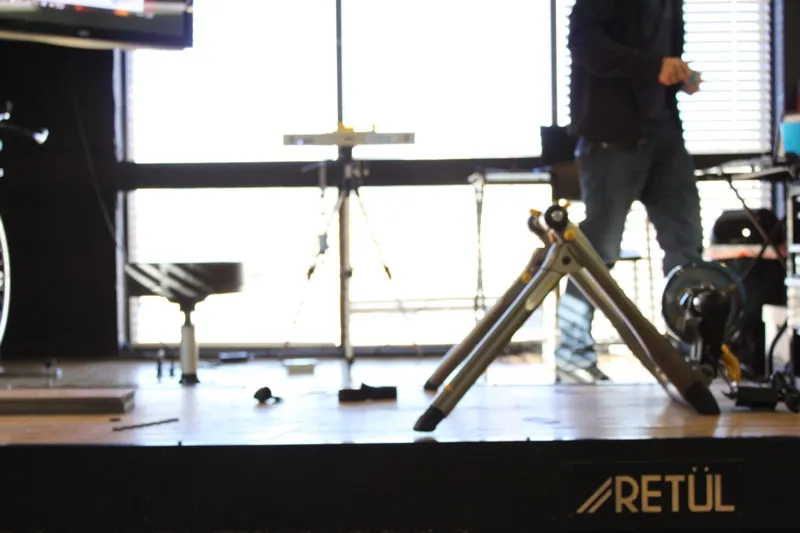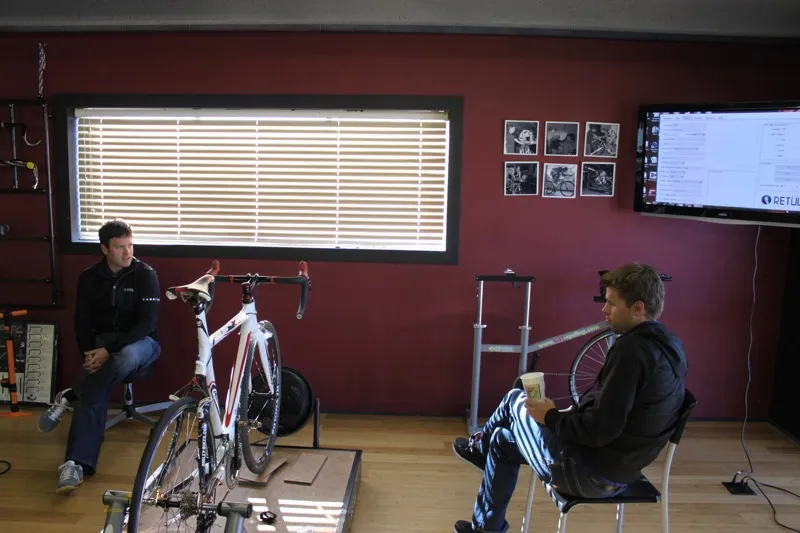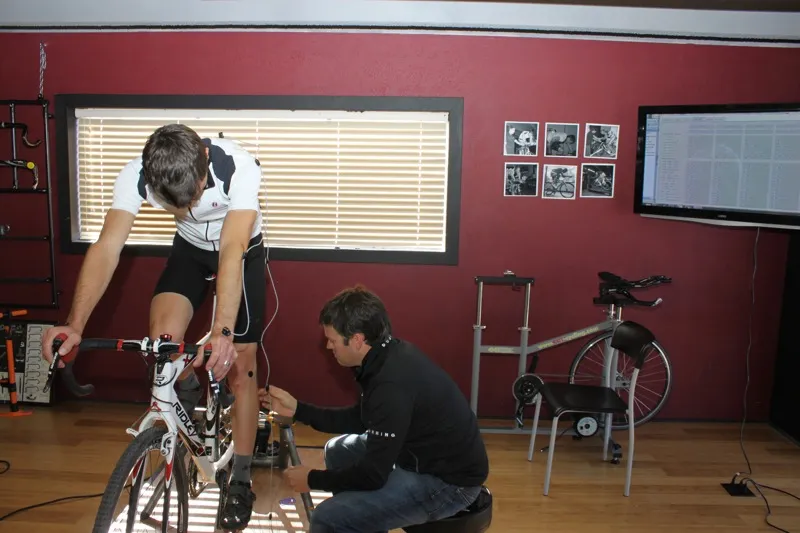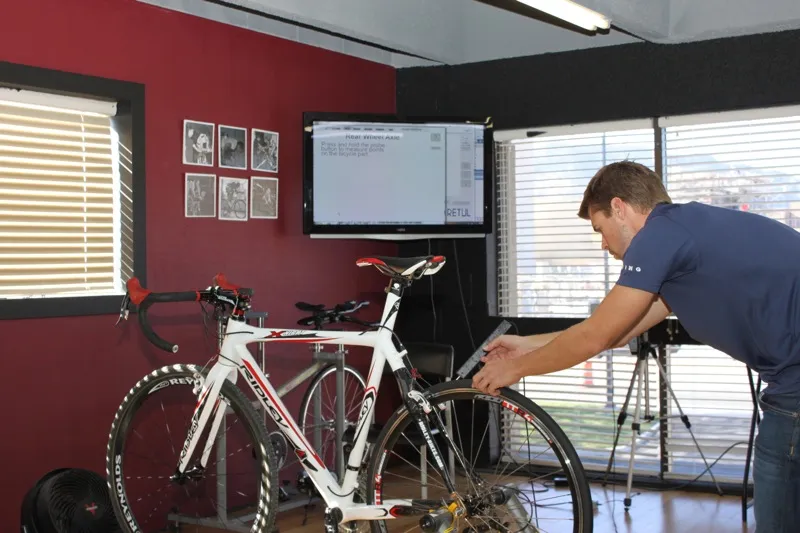There are as many bicycle fit philosophies out there as there are bike fitters, yet many people just wing it until they run into a problem. They’ll go into a shop to buy a bike, let the staff set it up and if they feel comfortable, they’ll probably never take it any further.
Like many serious riders, we've been riding and racing for years without pain, but we've always wondered whether there was anything we could do to go faster. So, when we visited Retül co-founder Todd Carver to test his fit system, we had this as our goal.
Did he make good? Well, yes and no. He made a single major change to our position on the bicycle: lowering the saddle by almost 2cm in order to put us within his Retül philosophy’s suggested average range for knee angle (flexion 110 degrees, ±3 degrees; extension 37 degrees, ±3 degrees), which we were wildly out of.
Other than that, our previous bike fit, which we'd been using for five years, seemed to be spot-on, putting us within range of every Retül recommended fitting parameter. The change casn't hampered our performance and Carver says it allows better use and efficiency of the major cycling muscle group, namely the quads, which should improve power output.
While we believe this reasoning to be sound and can attest that it’s working because of soreness felt in the named areas for the first week after the change, we haven't, unfortunately, been able to tear the legs off of the racers we’re usually riding with. Ultimately, though, we’re happy with the change.
While there have been no immediate performance gains four weeks on, or the perception thereof, we do feel more confident in our bike handling with our new, lower center of gravity and reduced amount of handlebar drop. We'll need to spend more time training those muscle groups to work in the new position before we'll see the full impact on our efficiency and power output.
What is Retül?
At this point you may be wondering why we were expecting so much from a $249 (price varies depending on location and fitter) Retül fit. Well, since the company burst onto the scene in 2007 they've caused a buzz. Carver and his partners, Franko Vatterott and Ivan Faul, have fitted the likes of the Garmin, RadioShack and Sky teams, as well as World Cup mountain biker Geoff Kabush and cyclo-crosser Tim Johnson, to name a few.
In fact, Levi Leipheimer was set to fly into Denver, Colorado the day after our fit to have his current position and bike metrics logged into the Retül system as a baseline before he was to start making small changes this off-season. His goal is the same as ours: to improve efficiency and performance.
The Retül system, consisting of 3D data capture hardware and software, provides an extremely accurate way to measure a rider and his or her bike. It takes the place of a fitter’s level, goneometer, tape measure and plum bob. What it doesn't do is take the place of a fitter’s expertise. But if your fitter is using a Retül, you can be assured they've got one of the most advanced fitting tools in the world.
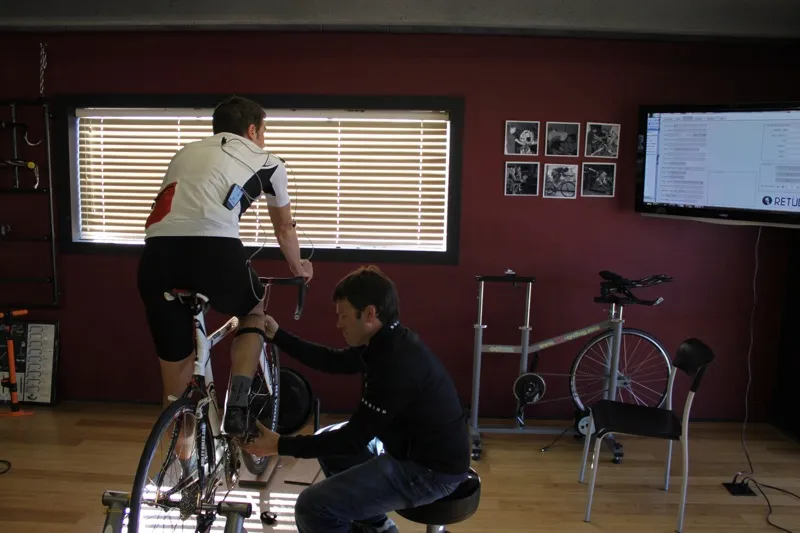
Carver places the LED transmitter array
“There is this myth – partially because we perpetuated it with our marketing – that Retül is the best fit in the world,” said Carver, one third of Retül’s founding team and the brand’s chief biomechanist. “But it doesn’t tell the fitter what to do. The Retül is just a tool; it stops there. It just captures the data. The way that we’re different, though, is that we actually have data, because the system captures it very accurately. No other fit system actually captures data, so ours is a data driven approach.”
The data pertains to the biomechanics of the rider’s position and movement as they pedal through a series of different power scenarios, during which a series of LED markers and external sensors capture key movements and measurements. The aim is to discover how the rider fits on their bike when actually riding, not just in a static position with a fitter manipulating their appendages.
Nuts and bolts, rather reflective markers and sensors
During our fit session, we were outfitted with seven LEDs – from foot to our hand and on each major joint in between – which projected our position and movements to a tripod mounted sensor array. This fed the information to a computer and Retül’s analysis software.
Once fitted with the LEDs we were put through a short riding session where measurements were recorded at various wattage outputs using a Saris CycleOps PowerBeam Pro trainer, up to our stated lactate threshold, based on an RPE (rate of perceived exertion) scale. This allowed us to settle into the most natural position the trainer would afford and allow the Retül system to capture multiple data points, which the computer then averages.
Once data was captured for one side of our body, the same process was carried out on the opposite side to help the fitter identify any imbalances or problems. Since the data is captured in three dimensions, by capturing each side of a rider’s body, they system can also ‘see’ the knee’s lateral movement as well as other similar movements in the torso, hip, ankle and foot.
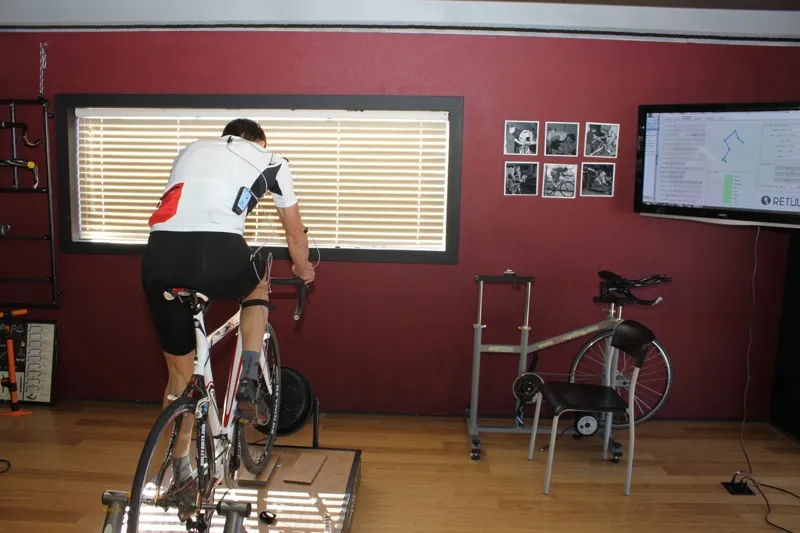
Capturing data is a dynamic process
With the newly captured data in hand, the Retül fitter then looked for anomalies (such as our massively too high seat height) from the fitting system’s accepted range. This is the first step where the fitter has to draw upon their biomechanical knowledge and fitting experience. When a rider is outside of a range, or has pain pertaining to a specific measurement, the fitter has to decide what to do.
Retül’s fitting ranges are based on accepted biomechanical measurements that take into account safe working conditions (ie. the upper and lower limits of flexion and extension, among others) and maximize biomechanical efficiency and performance. The goal is to find a neutral position that prevents injury, eliminates pain and increases power output.
The final step of the process is to input the rider’s final fit to the bike using the Zin tool and optical scanner, which is basically an LED on a stick that allows the fitter to touch all of the critical points on the bike and log the exact positions of the seat, handlebar and various parts of the frame. There are 13 to 15 points of reference in total. This gives the rider a digital file and printout of their fit, should they need to double check position down the road.

Mat Steinmetz, head Retül fitter, logs our new fit using the Zin tool
Collaborative result
The whole Retül process was much more collaborative than we'd expected. In the past, we’ve experienced fitters who operate under the credo, ‘my way or the wrong way’. But Carver and Mat Steinmetz, the head Retül fitter at their Boulder, Colorado studio, were willing to consider and work around a number of idiosyncratic modifications we'd previously made to our fit.
Our primary example is slamming our pedal cleats all the way rearward, to offer the fastest off-the-line pedal engagement for cyclo-cross starts. In contrast, our previous fit called for the cleats to be positioned at the furthest forward point our shoes would allow. Retül let us keep our cleats slammed but warned us that by making this change ourselves without accounting for any other metric, such as seat height, we'd caused extreme knee extension. This shows the need for a ‘tuned’ fitter.
Riding away happy
Bike fitting is a confusing field to navigate and an even tougher job to do yourself, as we've demonstrated. But it's becoming more mainstream thanks to systems like Retül and Specialized’s Body Geometry Fit program, both of which offer both advanced fitting tools and certifications for prospective bike fitters. After being through Retül’s fit system, we’ve come away happy with both how the tool works and the flexibility of their fitting philosophy.
Despite no immediate result, we're hoping to eventually see an increase in efficiency and power as our body adapts to the new position. We'd recommend a Retül fit to any of our friends, if only for a solid starting point or a check of an existing position. Granted, the results are highly dependent on the person using the ‘tool’, but if they’re as knowledgeable and open to a rider’s concerns as Carver and Steinmetz were to us, any rider will likely ride away happy.

